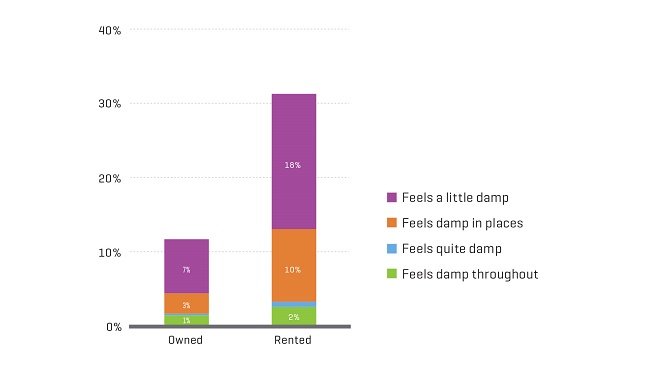The House Condition Survey includes three different assessments of mould and damp made as part of the physical house inspection. These include:
- the degree to which the house felt damp or dry
- whether or not the house smelt musty
- whether mould was visible and to what extent (all rooms are assessed individually).

Surveyors found 31% of rentals felt damp to some extent - from ‘a little damp’ to ‘damp throughout’. This was nearly three times the proportion of owner-occupied houses (11%) with signs of dampness.

Twice the proportion of rentals (12%) had a musty smell compared to owner-occupied houses (6%).
Overall, mould was visible somewhere in the house in nearly half (49%) of all houses surveyed, breaking down to 44% of owner-occupied and 56% of rental properties. In most cases, this was just specks of mould, but in over one-quarter of rentals, there were moderate or worse patches of mould. Mould was most commonly found in bathrooms.

The owned versus rented difference was greater when mould in bedrooms is considered. Almost 30% of rentals had visible mould in bedrooms compared to 18% in owner-occupied houses.
Strong connections were found between the presence of mould and the presence or absence of insulation, heating and ventilation and the heating type.
As also might be expected, mould levels were higher in houses that had poorer condition ratings and were considered less well maintained overall. For example, there was moderate to extensive mould in 44% of houses assessed as poorly maintained compared to just 7% in houses assessed as well maintained.